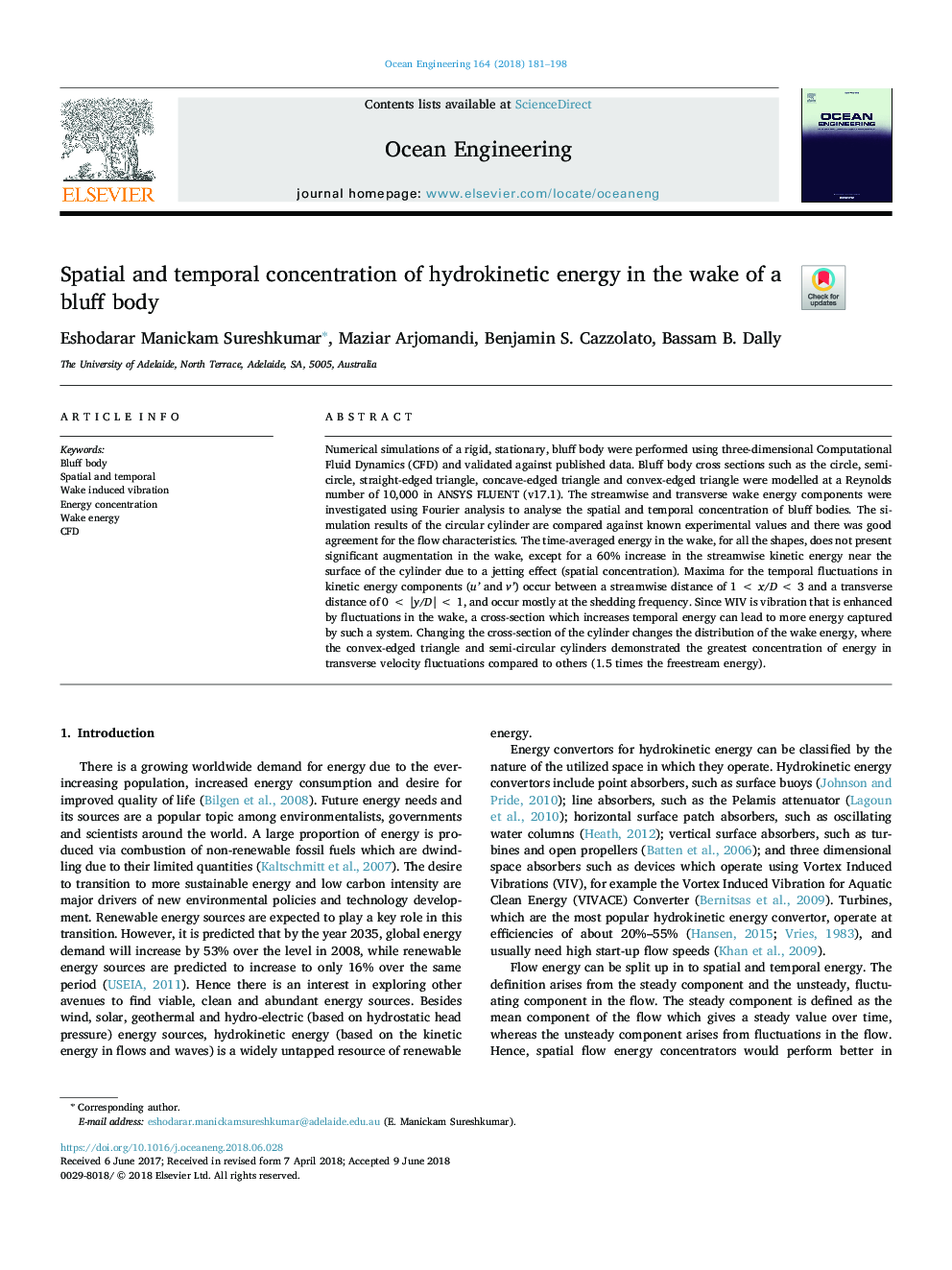| Article ID | Journal | Published Year | Pages | File Type |
|---|---|---|---|---|
| 8061889 | Ocean Engineering | 2018 | 18 Pages |
Abstract
Numerical simulations of a rigid, stationary, bluff body were performed using three-dimensional Computational Fluid Dynamics (CFD) and validated against published data. Bluff body cross sections such as the circle, semi-circle, straight-edged triangle, concave-edged triangle and convex-edged triangle were modelled at a Reynolds number of 10,000 in ANSYS FLUENT (v17.1). The streamwise and transverse wake energy components were investigated using Fourier analysis to analyse the spatial and temporal concentration of bluff bodies. The simulation results of the circular cylinder are compared against known experimental values and there was good agreement for the flow characteristics. The time-averaged energy in the wake, for all the shapes, does not present significant augmentation in the wake, except for a 60% increase in the streamwise kinetic energy near the surface of the cylinder due to a jetting effect (spatial concentration). Maxima for the temporal fluctuations in kinetic energy components (u' and v') occur between a streamwise distance of 1â¯<â¯x/Dâ¯<â¯3 and a transverse distance of 0â¯<â¯|y/D|â¯<â¯1, and occur mostly at the shedding frequency. Since WIV is vibration that is enhanced by fluctuations in the wake, a cross-section which increases temporal energy can lead to more energy captured by such a system. Changing the cross-section of the cylinder changes the distribution of the wake energy, where the convex-edged triangle and semi-circular cylinders demonstrated the greatest concentration of energy in transverse velocity fluctuations compared to others (1.5 times the freestream energy).
Related Topics
Physical Sciences and Engineering
Engineering
Ocean Engineering
Authors
Eshodarar Manickam Sureshkumar, Maziar Arjomandi, Benjamin S. Cazzolato, Bassam B. Dally,
